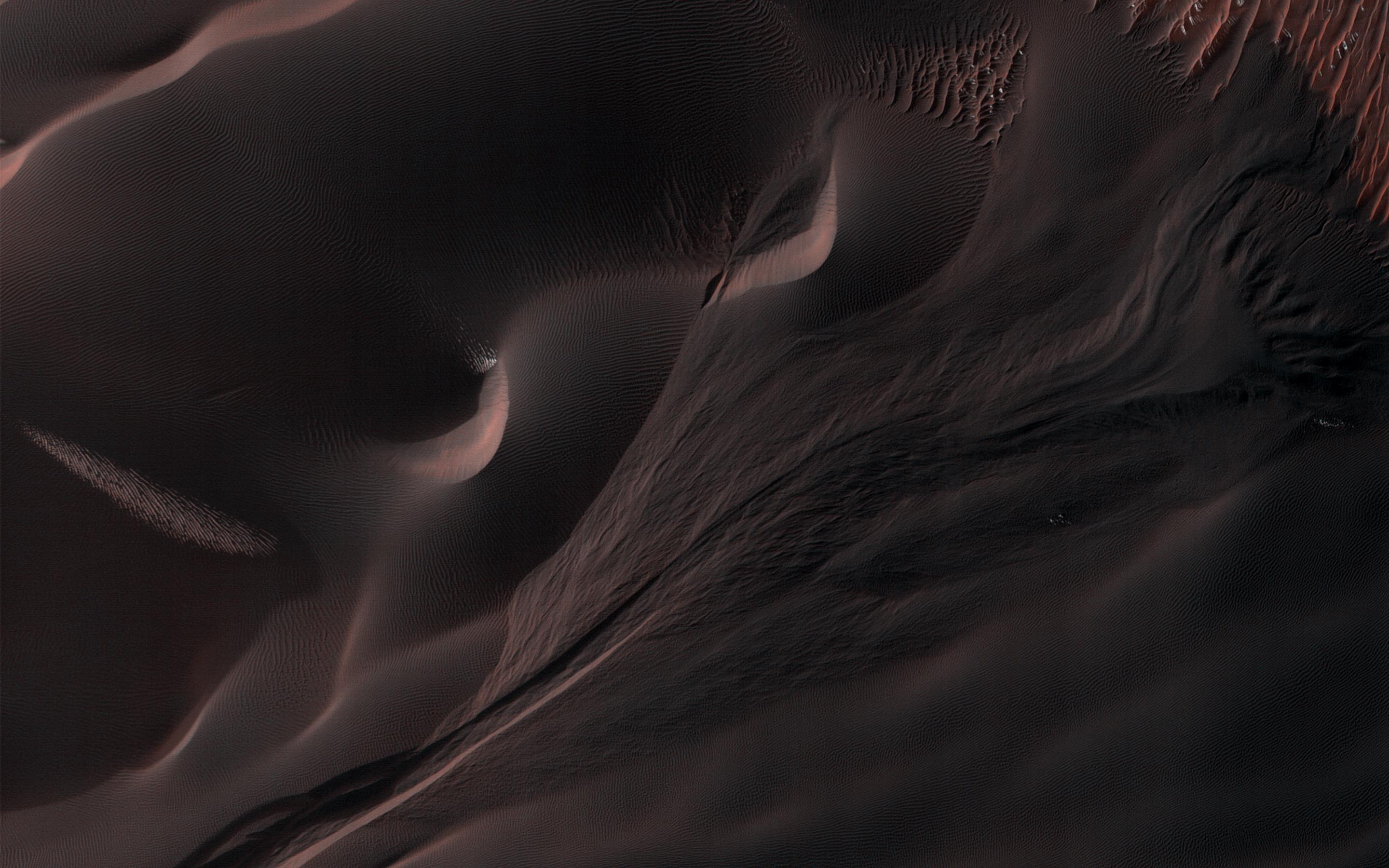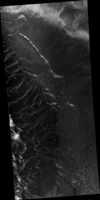
|
An Active Gully in Matara Crater
- Click the image above for a larger view
- Full-Res JPEG (2880 x 1800) (580.7 kB)
- Full-Res TIFF (2880 x 1800) (13.0 MB)
Caption:

Map Projected Browse Image
Click on image for larger version
Gullies in the sand dunes of Matara Crater are very active. One large gully in particular has had major changes in every Martian winter since HiRISE began monitoring, triggered by the seasonal dry ice frost that accumulates each year.
This time there was an especially large change, depositing a huge mass of sand . The sand divided into many small toes near its end, or perhaps many individual flows descended near the same spot. Additionally, a long sinuous ridge of sand was deposited. This could be a "levee" that formed along one side of a flow, but there is not much sand past the end of the ridge, so it might also be the main body of a flow. How many changes can you see in the cutout?
The map is projected here at a scale of 50 centimeters (19.7 inches) per pixel. (The original image scale is 56.0 centimeters [22.0 inches] per pixel [with 2 x 2 binning]; objects on the order of 168 centimeters [66.1 inches] across are resolved.) North is up.
Background Info:
The University of Arizona, in Tucson, operates HiRISE, which was built by Ball Aerospace & Technologies Corp., in Boulder, Colorado. NASA's Jet Propulsion Laboratory, a division of Caltech in Pasadena, California, manages the Mars Reconnaissance Orbiter Project for NASA's Science Mission Directorate, Washington.
Cataloging Keywords:
| Name | Value | Additional Values |
|---|---|---|
| Target | Mars | |
| System | ||
| Target Type | Planet | |
| Mission | Mars Reconnaissance Orbiter (MRO) | |
| Instrument Host | Mars Reconnaissance Orbiter | |
| Host Type | Orbiter | |
| Instrument | High Resolution Imaging Science Experiment (HiRISE) | |
| Detector | ||
| Extra Keywords | Color, Crater, Dune, Map | |
| Acquisition Date | ||
| Release Date | 2020-04-17 | |
| Date in Caption | ||
| Image Credit | NASA/JPL-Caltech/University of Arizona | |
| Source | photojournal.jpl.nasa.gov/catalog/PIA23853 | |
| Identifier | PIA23853 | |
